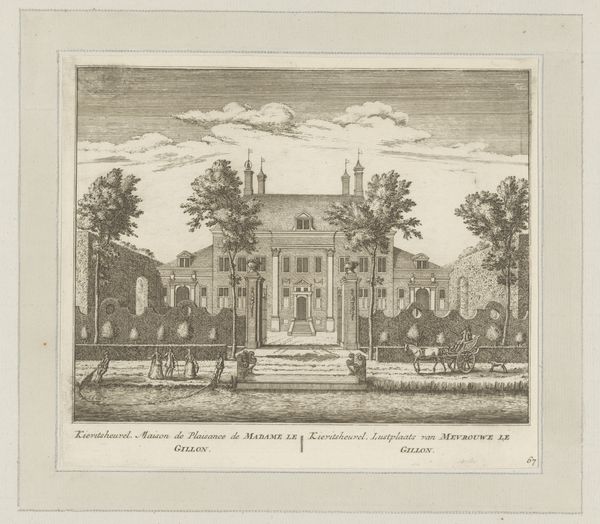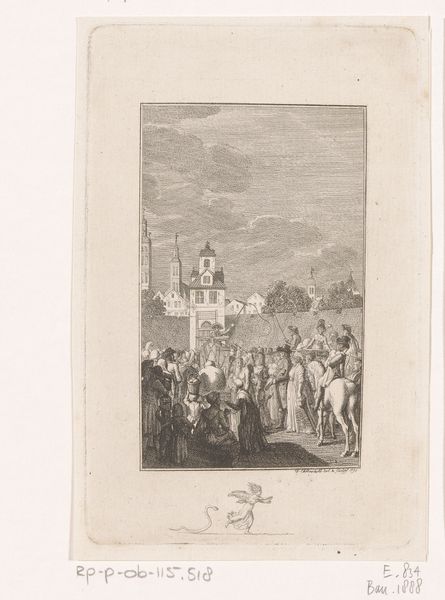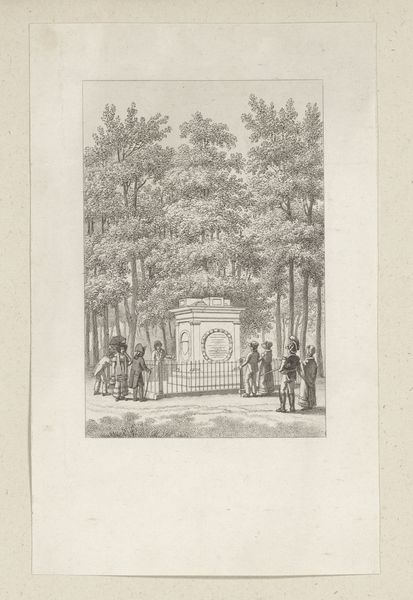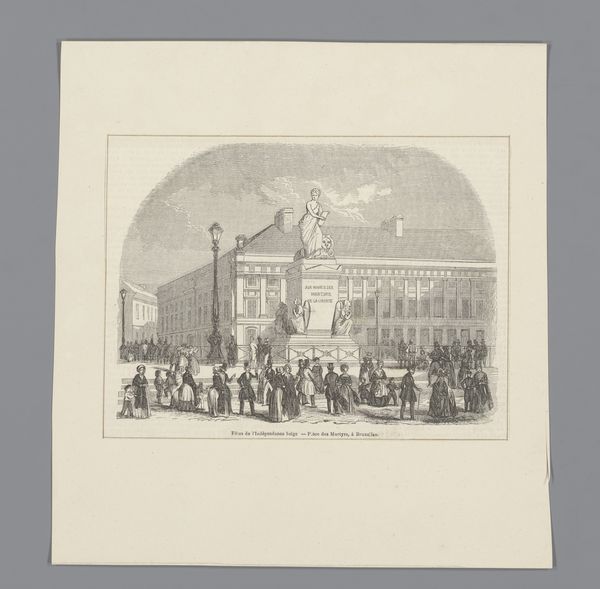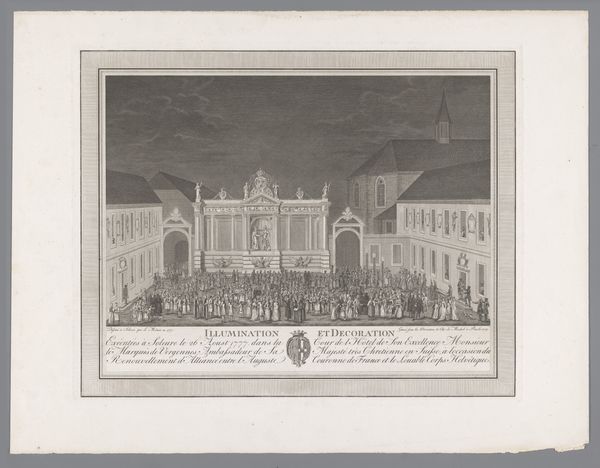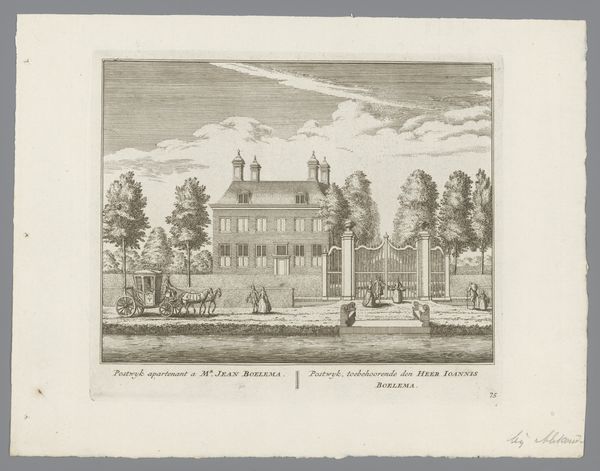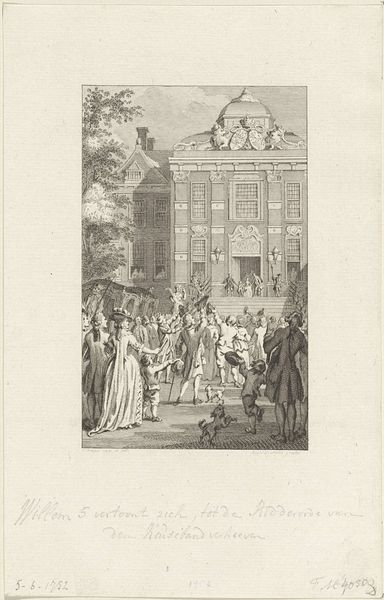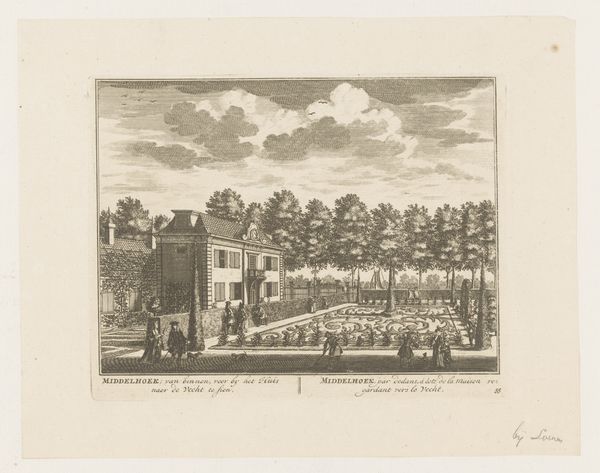
print, engraving, architecture
#
portrait
#
baroque
# print
#
old engraving style
#
cityscape
#
history-painting
#
engraving
#
architecture
Dimensions: height 185 mm, width 226 mm
Copyright: Rijks Museum: Open Domain
Curator: Here we have a print from 1752-1754, “Willem V vertoont zich als Ridder van de Kousenband,” or, “Willem V presented as Knight of the Garter," by Simon Fokke, housed here at the Rijksmuseum. Editor: My goodness, what a ceremony. So busy, but precise, like watching an anthill in white wigs. Curator: Yes, it depicts Willem V at the Oude Hof Palace. Engravings such as this were very popular then—allowing access, in a way, to grand events for a wider public. Note how detailed the architecture is and also, the careful work of line to create shade. Editor: Right. Engraving, of course, lends itself beautifully to this kind of documentation. It’s fascinating to consider the time invested in creating this image, each tiny line etched into the metal plate, wiped with ink, then pressed onto paper. That’s labor. Royal visibility made possible by such careful craft. Curator: It is almost like seeing the mechanics of power rendered in the most painstaking detail, don't you think? The theatrical display is carefully managed. Editor: Exactly, every carriage, every wig, every step meticulously planned and then replicated for wider consumption through this print. What sort of audience might buy a print like this, and what are they to do with it? To think a copy might become a framed display in a modest dwelling really puts it into perspective. Curator: I think you hit on a really important element here. This is visual propaganda, or promotion. And maybe those prints gave some agency, making citizens feel more tied to the court and more important, because more like the royal family itself. I look and I wonder who the knight represents here. Does he reflect stability? Change? Or merely the continuation of established power structures? Editor: Indeed. The image itself performs its own act of ennoblement. We are compelled to pause and study it and grant its status a sort of eternal legitimacy. This image shows me less about a Knight and more about the industry surrounding that symbol of a Knight. Curator: What I like most is the tension between that grand display and the relative accessibility through printed matter, where craft meets propaganda and careful detail meets political goals. Editor: Absolutely. When we attend to its construction, a portrait like this suddenly feels less like a simple celebration, and more like a meticulously manufactured object intended to be traded and consumed.
Comments
No comments
Be the first to comment and join the conversation on the ultimate creative platform.
